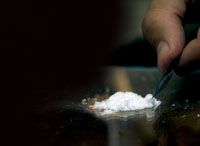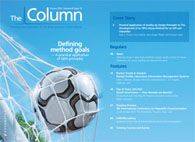Cocaine cutting
Many drugs that are sold on the street have been modified or diluted by the dealer and as a consequence forensic laboratories are overwhelmed with samples, which can take a long time to process.

Many drugs that are sold on the street have been modified or diluted by the dealer and as a consequence forensic laboratories are overwhelmed with samples, which can take a long time to process. A team of scientists has been looking at alternative faster methods for analysing cocaine and the agents used to cut it.1
The team evaluated a differential mobility spectrometry–mass spectrometry (DMS–MS) procedure on adulterated cocaine mixtures. Levamisole, which has increasingly been used as an adulterant in cocaine, was able to be isolated from a 13-component mixture. Analysis time was approximately 30 s, compared to 10–45 min using GC or LC methods. In addition, the DMS interface is only a few centimetres in length and can be adapted to any MS system using atmospheric pressure ionization.
The team concluded that DMS–MS has great potential and can greatly increase the throughput of drug samples submitted for forensic analysis. The team are now continuing their research into this area.
1. Paul Vouros et al, Journal of Forensic Sciences57(3), 750–756 (2012).
This story originally appeared in The Column. Click here to view that issue.

LCGC Blog: Forensics Laboratories Underassess Uncertainty in Blood Alcohol Determinations
August 8th 2023The level of uncertainty provided by most forensic laboratories for reported blood alcohol results has been woefully underassessed. Not only is this bad science, but someone’s civil liberties may be at stake.

.png&w=3840&q=75)

.png&w=3840&q=75)



.png&w=3840&q=75)



.png&w=3840&q=75)





